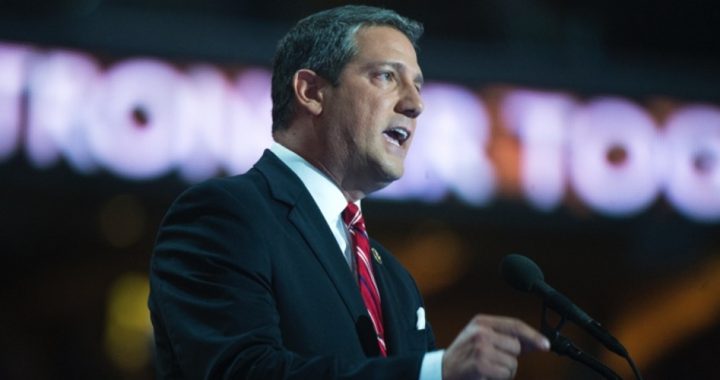
Who can forget then-Speaker of the House Nancy Pelosi (D-Calif.) insisting that the reason the House had to pass the Affordable Care Act (aka ObamaCare) was to “find out what’s in it,” or her snickering response to the query of whether it was constitutional: “Is that a serious question?”
Recalling such amazing statements, and noting her dismal 17-percent Freedom Index score (compiled by The New American, which rates members of Congress by how their votes correspond to fidelity to the Constitution), it is hard to imagine anyone much worse, from a constitutional and conservative point of view.
Pelosi was the poster child for the Republican effort to take control of the House of Representatives in the 2010 elections. After the GOP won a majority in that election, she was reduced from speaker of the House to the position of “minority leader.” (As speaker, she had made history by being not only the first woman in that position, but also the first speaker to have her personal name placed on the speaker’s door. Before, “Speaker of the House” had always been considered identifying enough.)
After years of her leadership in which the Democratic Party has been reduced to its lowest number in the House since before the Great Depression, it is not surprising that some Democrats might be ready for a change.
Riding to the rescue is Representative Tim Ryan (shown, D-Ohio). He is making the case that the Democrats need a new leader, to present a new image to the voters, now that they have lost the House, the Senate, and the White House (plus losing almost 1,000 legislative seats across the country) over the past few years.
Perhaps Ryan would present a better image than Pelosi to the voting public. But would he be any better in his fidelity to the principles of the Constitution?
The best answer is maybe. His Freedom Index score is marginally better than Pelosi’s, but still an anemic 26 percent.
Digging deeper into Ryan’s voting record, one finds a mixed bag, for sure, with a few good votes, but mostly bad ones.
First, the good votes.
This year, Ryan voted to repeal the Authorization for Use of Military Force (AUMF), the unconstitutional delegation by Congress to the president from years ago, giving then-president George W. Bush the authority to decide when, where, and under what conditions to use military force in the Middle East.
Another good vote by Congressman Ryan was his opposition to giving the president (in this case, Obama) “fast track authority” on trade deals. This vote, taken in 2015, was called Trade Promotion Authority (TPA), and is yet another example of members of Congress simply giving away their constitutional powers — in this case, the power to regulate trade with foreigners.
Along the same lines, Ryan was correct to vote against the repeal of Country of Origin Labeling (COOL). This bill was passed last year, when the World Trade Organization (WTO) directed the U.S. Congress to ditch this law, which required letting consumers know from what country beef, pork, or chicken had originated. Congress buckled to the WTO, thus surrendering more American sovereignty to unelected international bureaucrats.
Ryan also voted for an amendment to prohibit indefinite military detention of U.S. citizens and legal residents.
Alas, however — what with a mere 26-percent Freedom Index score, Ryan has tended to vote against the Constitution about 75 percent of the time. Some examples of this disregard for our founding document are his multiple votes for environmental regulation. For example, earlier this year, he voted against an effort to ease emission requirements for coal mining.
Ryan opposed authorizing an amicus curiae (“friend of the court”) brief in the case of U.S. v. Texas, which is challenging as unconstitutional President Obama’s executive order to defer deportation and provide work permits for illegal aliens. He has also voted repeatedly against repealing ObamaCare, as well as against eliminating funding for Planned Parenthood. He even voted “no” to the prohibition of tax-funded abortions.
Other votes of note include his opposition to granting approval to the Keystone XL Pipeline, and against auditing the Federal Reserve System (which is responsible for the decimation of the value of the dollar).
A recent interview with CNN anchor Jake Tapper is especially informative in predicting what type of minority leader Ryan would make. During the interview, Tapper queried Ryan about recent statements by Representative Keith Ellison (D-Minn.), a candidate to chair the Democratic National Committee (DNC). Though Ellison has multiple leftist views, Tapper zeroed in on just one: his incendiary remarks about the Second Amendment.
Tapper asked Ryan about Ellison’s denunciation of the Second Amendment in an appearance with Bill Maher on HBO’s Real Time With Bill Maher. Maher had asked Ellison why his Democratic Party had not come out “against the Second Amendment.” Ellison responded, “Bill, I sure wish they would. I sure wish they would.”
After playing a clip of Ellison’s direct attack upon the Second Amendment (which protects the rights of individual Americans to keep and bear arms), Tapper said to Ryan, “So, that’s your candidate for — a candidate for DNC chair saying he sure wishes the Democratic Party would come out against the Second Amendment. Is that the appropriate leadership for the DNC?”
Ryan tried to evade a direct answer, responding, “Umm, well, that’s not my decision entirely to make. I really don’t have a horse in that fight and so the DNC members are going to have to make that decision. Ultimately, that…”
Tapper then interrupted Ryan’s attempt at evasion. “But you want to lead the Democratic Party in the House. Don’t — I mean, you must have a position.”
Boxed in, Ryan finally responded with typical “progressive” talking points when it comes to the right to keep and bear arms, protesting, “That’s not my position. My position on guns and gun violence is not to get rid of the Second Amendment. We need people who can — who are sportsmen and can hunt and fish.” Of course, James Madison did not include the Second Amendment in the Bill of Rights to make sure someone could go fishing. Rather, it was intended to provide Americans a last line of defense against a tyrannical federal government.
But Ryan continued, “We need to have background checks. We need to close the gun show loophole. We need to make sure terrorists don’t have guns and we need to close the Charleston loophole. Those are the things we are pushing and I was on the House floor when we were having this sit-in on guns.”
After his laundry list of gun restrictions, Ryan added, “I think that’s an important discussion we need to have, but not to give away the Second Amendment. I don’t think that’s appropriate, but on the issue of gun violence, why do we have violence in our inner cities?”
Answering his own question, Ryan offered the typical left-wing response, arguing, “It’s economics. We — it’s poverty issues. This economic message should drive everything we talk about as Democrats. Poverty, middle-class wages, gun violence, things that happen in rural America , these are economic issues [about which] the Democratic Party has lost its way and if we want these Trump voters to come back, we need to start talking about these bread-and-butter, fundamental issues that make us Democrats.”
Keep in mind that the strong anti-Second Amendment remarks by Democratic nominee Hillary Clinton in her final debate with Trump probably cost her votes in the so-called Rust Belt states of Ohio, Michigan, Iowa, and Wisconsin. And Democrats were, for the most part, annihilated in rural America in this election.
Certainly, Ryan is “talking about” the issues that got the Democrats beaten in much of rural America, but at the end of the day, it’s difficult to see how he is offering any substantive differences from the present leadership of the Democratic Party. A congressman from Ohio might appeal more to rural voters than one from San Francisco (recognized as the citadel of the American Left), but with Ryan, it looks pretty much like more of the same — just with a Midwest accent.
Photo: AP Images



